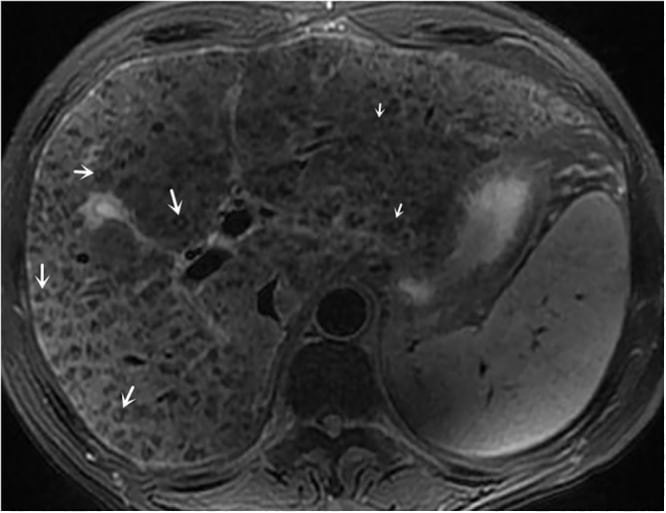Primary biliary cirrhosis or primary biliary cholangitis: It is an autoimmune, chronic, progressive disorder, more common in women characterized by inflammation and scarring of the intrahepatic bile ducts. It presents with jaundice, pruritus, abdominal pain and fatigue. Complications include portal hypertension, fat soluble vitamin deficiencies, osteoporosis and cirrhosis. Other autoimmune disorders may be associated. Hypercholesterolemia is seen due to biliary stasis. Most patients are positive for antimitochondrial antibodies like PDC-E2 (pyruvate dehydrogenase). Past bacterial or viral infection can act as a trigger. Diagnosis is by elevated direct bilirubin, alkaline phosphatase, GGT, AST, ALT, antimitochondrial antibodies and MRI showing periportal halo sign, lymphadenopathy and increased signal intensities in the liver. Treatment is with ursodeoxycholic or obeticholic acid and cholestyramine for pruritus , fibrates and liver transplant.

Primary sclerosing cholangitis (PSC): It is characterized by inflammation and scarring or sclerosis of the bile ducts. It involves both intra and extrahepatic bile ducts. It is more common in men. It presents with fatigue, pruritus, jaundice, splenomegaly, deficiencies of fat soluble vitamins, causing osteoporosis, cirrhosis and liver failure. About 70% of patients with PSC have IBD, mostly ulcerative colitis. PSC has also been associated with autoimmune disorders like type 1 diabetes mellitus, celiac disease, RA, Grave’s disease etc. It is strongly associated with HLA A1, B8, DR6 and DR3. There is increased risk of choledocholithiasis and cholangiocarcinoma. Laboratory findings include elevated AST, ALT, alkaline phosphatase, gamma glutamyl transpeptidase, gamma globulins (raised IgM) and elevated direct bilirubin. pANCA, anti-smooth muscle antibodies, ANA and anticardiolipin antibodies may be positive. Imaging studies are done with MRCP, ERCP and PTC (percutaneous transhepatic cholangiography). Imaging shows multiple strictures and dilations giving a beaded appearance . Biopsy shows characteristic onion skin or concentric fibrosis. Treatment includes cholestyramine for pruritus, ursodeoxycholic acid, endoscopic balloon dilation of bile ducts, supportive therapy and definitive treatment with liver transplantation.
Sign up for free to take 1 quiz question on this topic